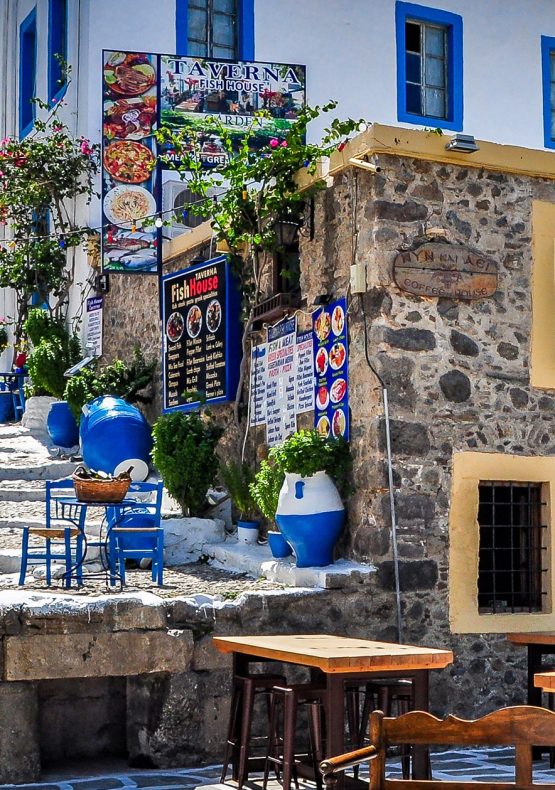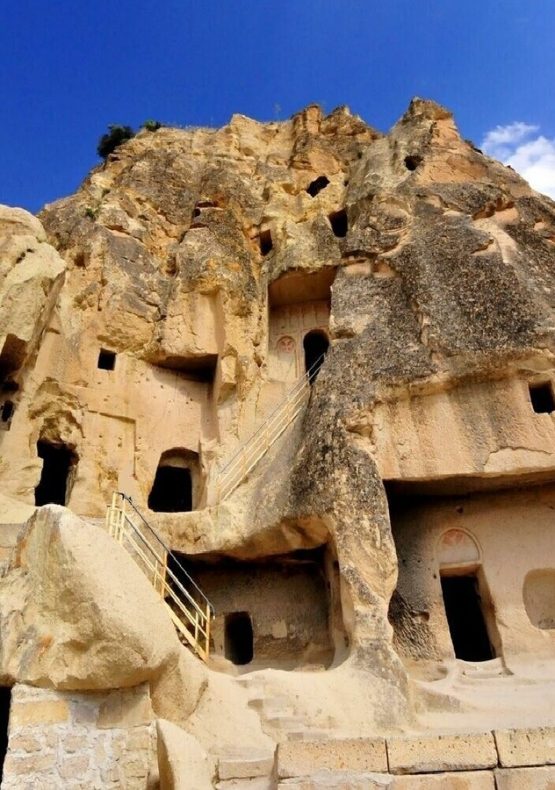Izmir’s history goes back to 3000 B.C. according to the results of historical knowledge and archaeological excavations. Findings and many investigations have been made to enlighten Izmir’s history: The continuous excavations on the Bayrakli ridges by Prof. Dr. Ekrem Akurgal since 1959, the discovery of the Zeus Altar by the German archaeologist Carl Humman in Pergamon (Bergama) between 1866 and 1878, the discovery of the Artemis Temple in 1869 by the British Wood and the continuous excavations by Austrian archaeologists at certain intervals of the city of ancient Ephesus since 1904. Also many researchers in different universities are still investigating on the city’s historical development.
Many legends are known about the derivation of the name of Izmir. According to the knowledge acquired from scientific studies the word “IZMIR” came from Smyrnain the ancient Ionian dialect and it was written as Smyrna in the Attican (around Athens) dialect. The word Smyrna was not Greek, it came from Anatolian root like many other names in the Aegean Region from the texts belonging to 2000 B.C. in the Kültepe settlement in Kayseri, a place called Tismyrna was come across and the (Ti) at the beginning was omitted and the city was pronounced as Smyrna. So the city was called Smyrna the early years of 3000 B.C. or late 1800 B.C. In the Turkish era the city was called Izmir.
In the years of 3000 B.C. Western Anatolia was under a rich Trojan civilization influence. The settlement areas built on the Aegean coast also developed generally under the Trojan influence. The Hittites which Homer wrote about in the Iliad, were an active force and civilization in the Anatolian mountain pastures because theTrojans were allies of the Hittites and they had a big influence on the Aegean settlements. As a matter of fact Pitane (Çandarli) in the Bakirçay River basin and similar settlements were built by the Hittites. It is believed that the Amazons lived in the area between Caria and the Lydia which today is the sides of the Yamanlar Mountains, and they carried on their existence until the arrival of the Aiolos and the Ions.
The Aiolos and the Ions who Fled from the Doric invasion around 1000 B.C., came from Greece and settled in Izmir and its surroundings. The important Aeol and Ionian settlements are as follows: Bergama (Pergamon), Manisa (Magnesia), Izmir (Smyrna), Urla (Klazomenai, near Cesme), Kemalpasa (Nimphaion), Cesme-Ildiri (Erythrai), Sigacik (Teos), Phokaia, Selcuk (Ephesus).
Until the 7th century B.C. Izmir got richer because of its trade with its neighbors especially Lydia. Its good neighbor relationships with Lydia lasted until the Lydians were conquered by the Persians. The Persian sovereignty ended with Alexander the Great’s arrival to Anatolia in 334 B.C. In these years, in which the Hellenistic period began, a new settlement was formed around Kadifekale (Mount Pagos) and its city walls belong to the Hellenistic period and have undergone many restorations in the following periods.
The city, which was tied to the Pergamon Empire in 197 B.C., passed into the control of the Roman Empire after a short period between 27 B.C. and 324 A.D. Roman control transformed Izmir into an important trade and harbor city. For the west, Izmir was seen as the center of Asia. In this period the Agora, Acropolis, Theater, Stadium, and constructions that did not remain up to now, like the libraries and the fountains, were built during this period.
The two roads stretching from Kadifekale (Mt. Pagos) to Ephesus and Sardis were built during the Roman period. In 324 A.D. after the Roman Empire was divided into two, Izmir had been taken by the Byzantine Empire and Ephesus especially was an important cultural and religious center in the classic Hellenistic, Roman and Byzantine periods. An important development was not seen during the Byzantine period.
Even though Izmir came into the possession of the Hun Emperor Attila, this authority did not last long and the city re-taken the Byzantines.
Kutalmisoglu Suleyman Shah in 1076 was the first conqueror of Izmir by the Seljuk Turks. In the period that the famous sea admiral Çaka Bey was appointed as the mayor of Izmir; Urla, Foça and the Islands of Sakiz (Chios), Samos and Istanköy (Cos) were conquered. After Çaka Bey’s death the city and its surroundings passed into the possession of the Byzantines in 1098. Then Izmir was taken by the knights at the time that Istanbul was invaded by the Crusaders. In 1320 the Turkish sailor Umur Bey returned Izmir from the Catholic knights and added it to the Turkish land.
In the period of the principalities, Izmir and its nearby surrounding were under the reign of the Saruhanogullari principality. Pergamon (Bergama) and its surroundings were tied to Karesiogullari principality. The reign of Izmir and its surroundings passed into the Ottoman hands completely in 1426.
The following Turkish architectural constructions are distinguished examples of the Turkish culture built during the Ottoman period, they have adorned Izmir for centuries: The Hisar Mosque, The Sadirvan Mosque, the Hatuniye Mosque, the Konak Yali Mosque, the Kemeralti Mosque, the Kestane Bazaar Mosque, the Izmir Clock Tower, the Kizlaragasi Han (Inn – commercial building), the Mirkelamoglu and Cakaloglu Inns and other inns (trade places for spending the night), Bedesten (Ottoman’s special trade constructions).
Beginning with the 16th century Izmir had an important place in the world trade. There was an increase in the consulates of foreign countries especially due to the capitulations that the Ottoman government provided for Europe. It is known that these consulates participated in the trade activities and each anchored their ships in the bay.
A castle was built on the narrowest point of the bay to check the ships entering and leaving the Izmir Gulf. New constructions were built in the second half of the century to help developing of the city’s trade. Among these constructions, the most important examples are the customs building in the 19th century, the sectors of packing, insurance, stock and banking.
In the years of the struggle of Liberation, Izmir underwent a great wreckage with huge destructions and fires. With the driving away of the Greek army by the leadership of Mustafa Kemal Ataturk on September 9th 1922, Izmir started to become a modern city of the young Turkish Republic and developed this character more everyday.
Today, Izmir is the third largest city of Turkey with a population of 4 million (2012). It’s a modern city and one of the main hubs for exporting various agriculturaland industrial products from its port. The 23rd Universiade Summer Games were held in Izmir between 11 – 21 August 2005. There are several interesting small towns and holiday resorts around Izmir such as Foca, Cesme, Seferihisar, Teos, Urla, Gumuldur, Selcuk and so on.


